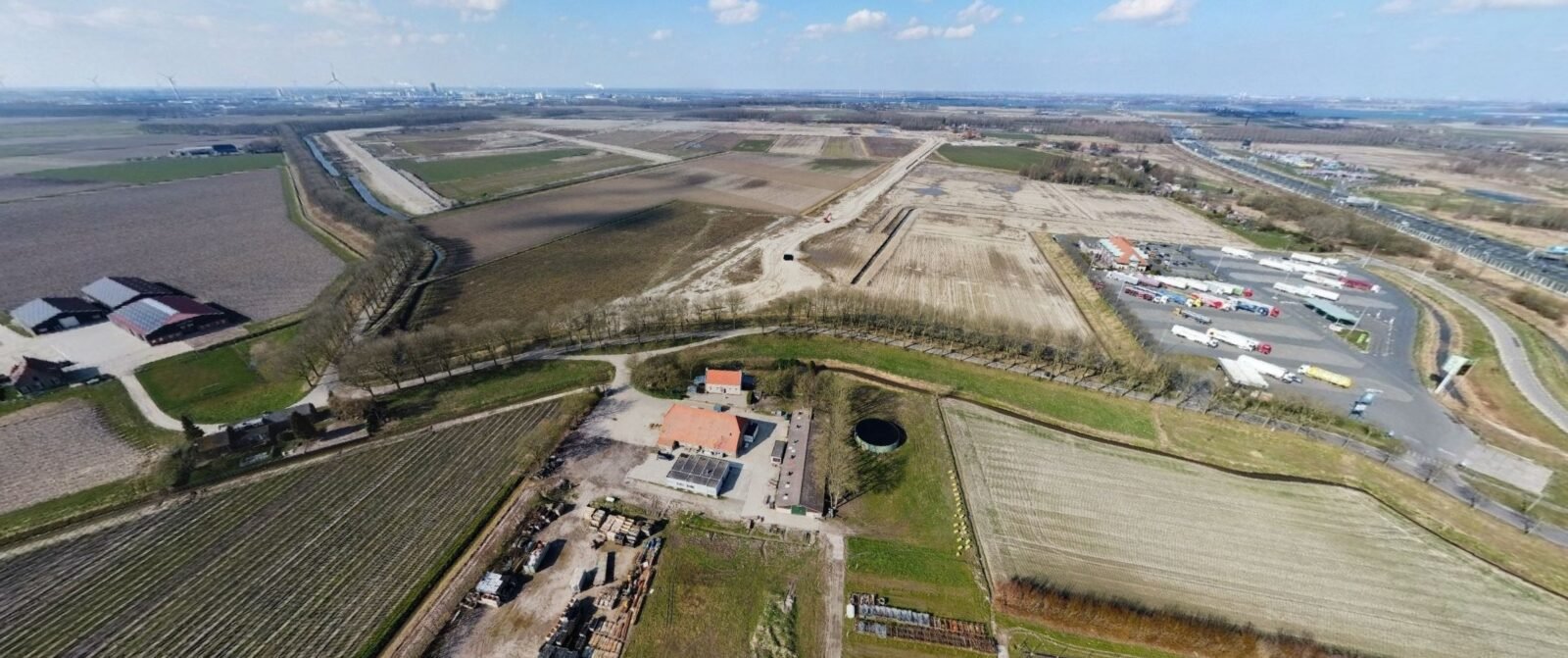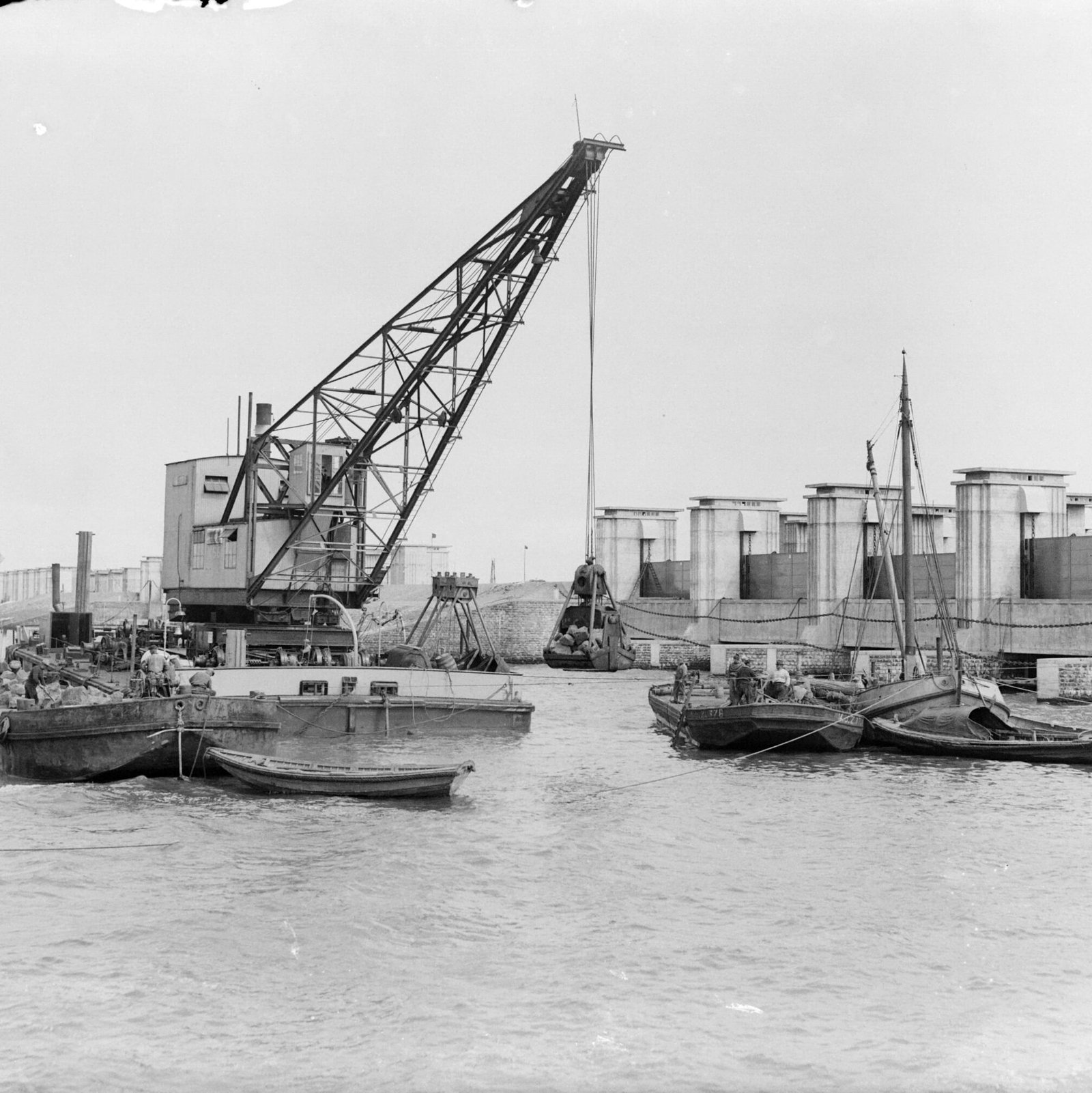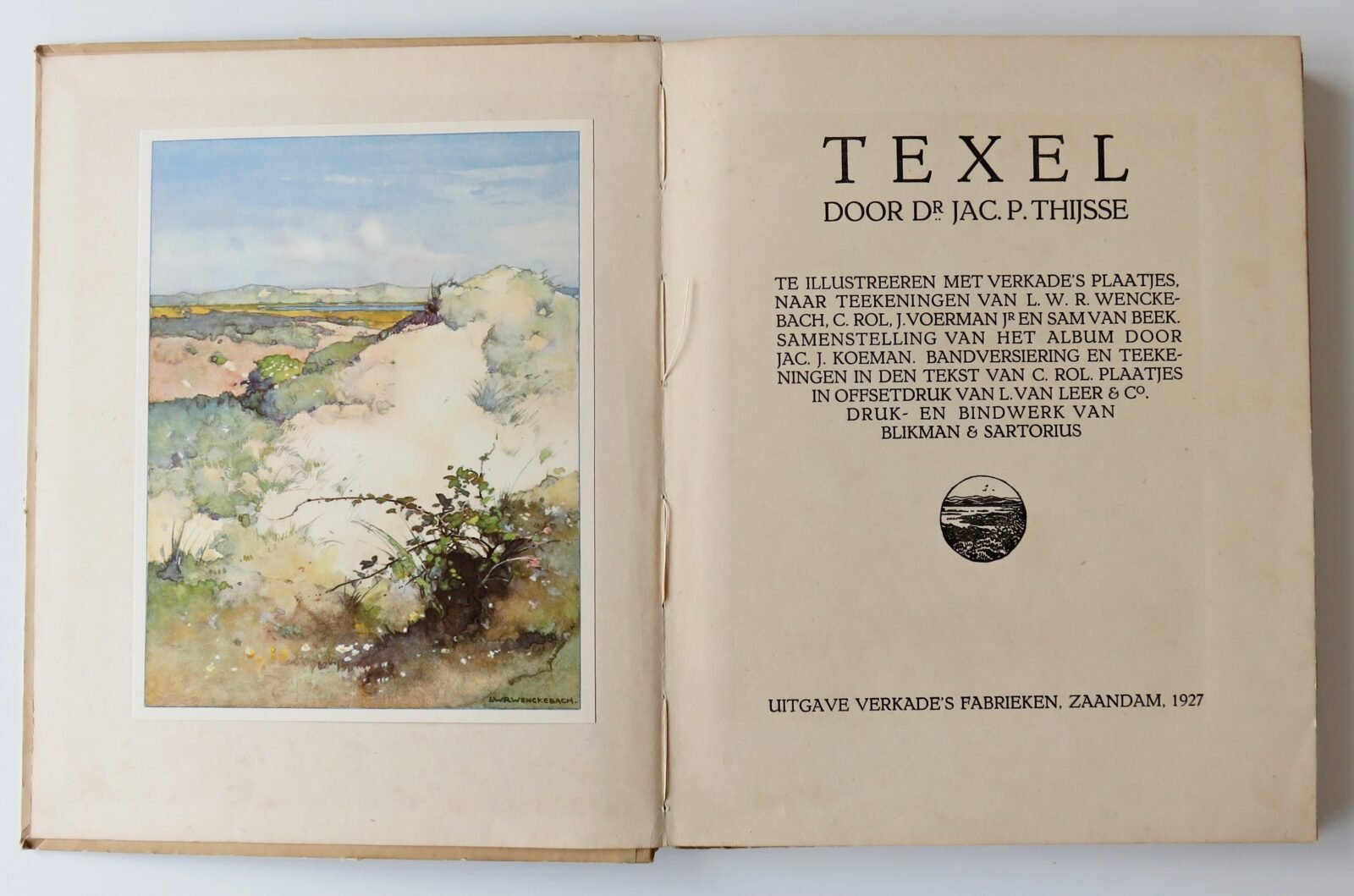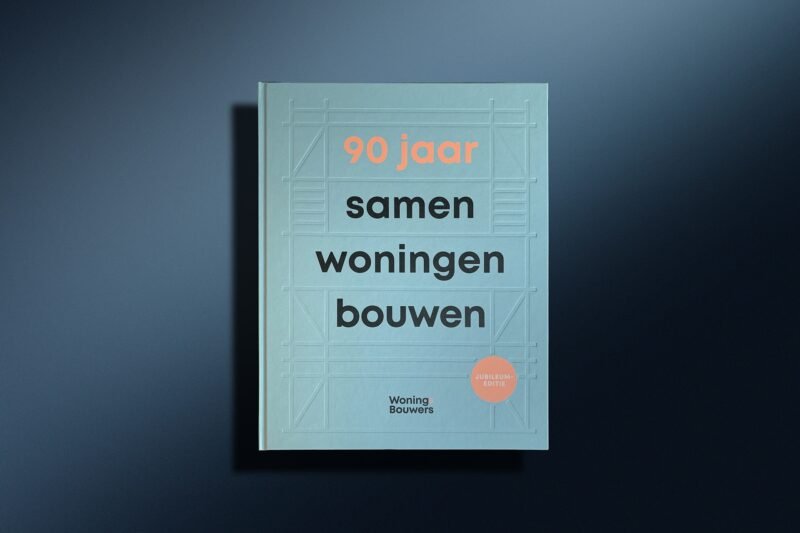Adriaan Geuze on the Future of the Dutch Landscape
What will the Netherlands look like in 90 years? Landscape architect and West 8 founder Adriaan Geuze hopes that the big challenges and crises will force us to reinvent our spatial planning tradition.

You Can’t Leave the City Anymore
Adriaan Geuze conducts research at TU Delft as a professor of landscape architecture and is a partner at West 8, a firm for urban planning and landscape architecture and infrastructure, with offices in Rotterdam, Belgium and the United States. West 8 works on numerous large-scale assignments: from the renewal of the Afsluitdijk to the redevelopment of the Central Waterfront in Toronto. In doing so, it has won quite a few international awards. In Delft, he finds the time to thoroughly reflect on the state of spatial planning in the Netherlands. “Together with students, I cross the country and study urban landscapes. But we also dive into the data, do systemic research, see what is going on. If we then connect reality with the insights we collect at the university, we see interesting perspectives.”
‘Interesting’ is still a mild expression for Geuze’s concerns about the way large-scale spatial tasks are being tackled. Cohesion and direction seem to be lacking, developments are taking place that hardly anyone asked for. And yet they happen. “My neighbour told me the other day that she no longer enjoys taking bike rides so much, because she no longer sees the horizon and only cycles between the company boxes. If you were born in South Holland, like me, and are a connoisseur of the landscape, you panic about what is happening,” says Geuze. “The region has exploded, 3 million people live there. The cities have expanded up to their municipal boundaries, expansion district by expansion district. In the post-war period, this region was the powerhouse of the economy. Like a volcano, lava blobs have descended everywhere: ports, marshalling yards, refineries, the world’s largest greenhouse area, which has now doubled in size. The area is fragmented by awe-inspiring infrastructure and hinterland connections. Along these lie business parks, logistics halls and furniture boulevards, and intrusive billboards are everywhere. The pace at which this is happening is unprecedented. People cannot relate to this. We are becoming ‘footloose’ in relation to the landscape. Now, just like that, wind farms and another 200,000 houses will be added. Not only here in South Holland — Haarlemmermeer, North Holland, Brabant, the Nijmegen-Arnhem region, Twente and Parkstad have also become contiguous urban agglomerations. Utrecht and Zwolle will follow in the near future. What kind of country do we want to live and work in?”
“Spatial planning is populated by people dealing with procedures. There are no economists and engineers involved“
Adriaan Geuze

We’re No Longer Planning
Space is so scarce in the Netherlands that we need to be serious and careful about making spatial claims, Geuze believes. “The Netherlands is very densely populated compared to countries of similar size, such as Denmark and Switzerland. We face a number of large-scale tasks, of which housing is just one. We are talking about a population increase of one million every decade. There’s already a huge shortage of houses, everyone is stuck in traffic jams, trains don’t run. One million more people means not only a lot more houses, but also more supermarkets, sports parks, stations and asphalt. At the same time, we’re in the middle of the energy transition. The landscape is being claimed for solar and wind farms. Oh, and we also need a new agricultural system. The whole food chain, from farmer to supermarket, needs to be rethought and related to soil and landscape. Last but not least, we live in a country that’s half below sea level and extra vulnerable to climate change. We really have our hands full,” says Geuze. “All these tasks are large-scale and systemic, and deal with the spatial future of the Netherlands. They take 10 to 20 years to solve and involve billions of euros. We need smart, accurate planning for them. And that’s precisely the problem: we don’t do that anymore. We have reached an impasse. Our prospects for action are based purely on short-term thinking and appear to be increasingly legally constrained.”

The Netherlands is the country of major public works, with which we still attract international attention today. Think of the Zuiderzee Works, the Delta Works and the Maasvlakte. “What people decided to live on the seabed? So why is it that we seem to have forgotten the art of large-scale spatial planning?” wonders Geuze. “For a thousand years, there was always ‘new land’ — there was literally a future in the making. The land was consolidated and the water managed. In the 1970s, the Delta Works were finished, reconstruction was over, the Netherlands was finished. At least that is how people claimed. We entered a future-less era. ‘Spatial planning’ was introduced on the basis of sectoral policies and procedures: structure plans, zoning plans, planning frameworks. Hundreds of thousands of people are working on these every day. The procedures are becoming increasingly complex and degenerate into court cases that always take a long time to be decided by the Council of State,” says Geuze. “It was also decided that spatial planning should be decentralised. Provinces and municipalities have to fulfil these tasks in a context of short-term thinking, participation and powerful sectoral lobbies. There is no democratic transparency. There are no system thinkers who can come up with smart solutions, there’s no integrated plan. We have abolished all that. To break the deadlock and curb procedural chaos, there are hopes for the Omgevingswet (Environment Act), which will surely make municipalities think more integrally. An expansion of the sports park in Zeist is fine through the Omgevingswet. But the Municipality of Zeewolde deciding on the construction of a data centre that consumes 1,5% of our national energy consumption? Now that seems to me to be a matter of national interest par excellence. For complex, large-scale long-term tasks and for the realisation of most infrastructure, the Omgevingswet offers no help.”
Geuze finds the implementation of the energy transition a typical example of the current lack of democratic transparency. “The coordinating consultative body is the Climate Council, which organised a series of ‘Climate Tables’ where all kinds of parties were allowed to have their say. But how can Dutch citizens influence this? This is a sad extra-parliamentary exercise, a fundamentally undemocratic approach! I am a member of the ANWB because I want them to advise and assist me when I have car trouble, not because they’re sitting around debating energy transition.”

The Building Sector Can’t Solve the Crisis Alone
The housing crisis is another task of national importance that needs urgent direction from the state. The building sector cannot solve the housing crisis alone, Geuze argues. We need each other and will have to tie different sub-tasks together: nitrogen, water, energy, housing. “It’s a big boost that a Ministry for Spatial Planning has been established again. The minister wants direction and stated in his introductory speech that it should be about ‘more than housing’. We need to build a million houses. But who are those houses for? Who will be in charge? Where should we build? How will we finance it? Can those houses be moved later? What about the climate challenge? These are questions the minister has to start answering. You can compare it to the VINEX decision of yesteryear. The housing task benefits greatly from central direction, creating a magnetic field in which everyone can operate and has certainties.”
Geuze refers to London, where the government uses infrastructure to guide spatial development. “The Jubilee Line and the network of the Docklands Light Railway have guided development sites: the South Bank and Waterloo Station, where major cultural institutions settled, Canary Wharf, the O2 Arena, the big new residential areas of the Docklands, even the Olympics. ‘Infrastructure is always in the right place’ they say there. Imagine doing those million new houses in the Netherlands London-style, the Minister of Spatial Planning would first of all have the Minister of Transport and Public Works draw up an investment strategy focusing on existing motorways and railway lines. This would create building sites that are better located than others. That is where we will develop. In other locations we will not. In such an approach, we will not build first and then solve traffic jams later at the expense of nature and tax money. That way, we avoid mistakes like in Vianen, where the Utrecht urban region built large new residential areas. Because there is no railway line, all the new residents get into their cars, so that the whole country now suffers from traffic jams on the A27 and A2 highways.”
According to Geuze, centrally controlled planning shouldn’t be complex. He stresses that land use zoning can be a simple and inexpensive means of controlling spatial planning. “In Norway, Denmark and Bavaria, the government uses the term ‘green belt’. There, you’re allowed to farm and a farmer is also allowed to invest, but nothing else is allowed. So: no unbridled urban expansion, no distribution centres. Their argument is that a high-quality economy benefits from a good environment and an attractive landscape. As a result, land values fall outside cities, because there is no more speculation with land. Agriculture then benefits from this. As a counterpart to the green belt, real estate values in the city increase enormously and new high-quality urbanity emerges. In Bavaria, you won’t find ‘urban sprawl’. You can see the Alps from a long distance away. There are no halls, advertising masts and McDonald’s branches along the motorway. Residents find the landscape too special for that. England has decided for the same reason that wind turbines will not be on land, but at sea. And they have already put up proportionally more of them than we have.”
“We need a new national planning authority modelled on our rich planning traditions”
Adriaan Geuze


New Planning, New Cultural Landscapes
That other countries seem to have a stronger awareness of the landscape than the Netherlands, Geuze finds strange. “Foreigners characterise the Dutch precisely through their landscape: the flat horizon, the windmills, the cows, the tulips, the painters. This small edge of the continent has an unprecedented geomorphological diversity: the sand barriers, the sea inlets, the river land, the peat, the higher grounds. For a thousand years, we created cultural landscapes in these places. We reclaimed the peat, drained polders. Every ten kilometres you find authentic and crushingly beautiful regional landscapes. Dutch cultural landscapes are recognisable, give identity and fuel the feeling of home. You come from the Gooi, from the Terpenland, from the Alblasserwaard, from the island of Schouwen, or from the Barony. The sum of these is the Verkade album, which explained all those landscapes with their unique plants and animals. Residents of Paris and London spend an hour hanging on a loop in the metro underground to get from A to B. In the Netherlands, when we go to work, school or family, we always pass through the landscape. We see the day being born through the haze of the fields. We see the seasons passing by us. The backlight and low clouds, the horizontal rain. We arrive at our destination reborn.”

The Dutch cultural landscape with its strong regional identities is not a solidified concept that stands still in time. The Flevopolders, the Delta Works, the new Ruimte voor de Rivier projects and Brainport Eindhoven are examples of new cultural landscapes, Geuze believes. “New layers are being added all the time. We should not roll out the big tasks sectorally and generically, but make them specific to our rich cultural landscapes. We should cherish them and not destroy them. We can enrich and renew them, add new layers to them. Look how inspiring everyone finds the Waalsprong near Nijmegen and the Marker Wadden! We can still solve tasks and create new layers like the best of them.”
To break the deadlock, we must ensure that a planning authority is established at the Ministries of Housing, Spatial Planning and the Environment, Transport, Public Works and Water Management, Economic Affairs and Agriculture, to deal with long-term and medium-term tasks and work on systemic solutions at national and higher regional levels, Geuze argues. “We need to reinvent our planning tradition. We cannot have lost it, because we could also do it from, say, 1904 to 1970. In that period, we devised the Volkswoningbouw, made the Zuiderzee Works, carried out the Delta Works, built and dismantled the State Mines, built the national road network, completed the reconstruction, carried out the land consolidation of the entire Dutch territory. This was always done without stupid blueprint plans. Instead, we worked with a balanced combination of top-down direction and legislation coupled with bottom-up implementation. These kinds of tasks take place from a clear vision, span a generation and are managed with professionalism by people with operational and pragmatic attitudes. We need new types like Lely and Mansholt. They’re around, that’s for sure.”




